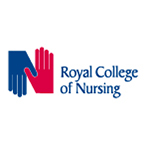Definition and Principles of Nursing
Eight principles that apply to all nursing staff and nursing students in any care setting
Nursing is the largest safety critical profession in health and social care. The nursing team is diverse and includes the nursing support workforce. The RCN last published a definition of nursing in 2003. This resource includes a new definition that depicts the change and increased complexity that the nursing profession has seen over the last two decades.
The Principles of Nursing are mapped to and complement the NMC Code (for registrants).
Definition of Nursing

Nursing is a safety critical profession founded on four pillars: clinical practice, education, research, and leadership.
Registered nurses use evidence-based knowledge, professional and clinical judgement to assess, plan, implement and evaluate high-quality person-centred nursing care.
Definition of Nursing (expanded version)
Nursing is a safety critical profession founded on four pillars: clinical practice, education, research, and leadership.
Registered nurses use evidence-based knowledge, professional and clinical judgement to assess, plan, implement and evaluate high-quality person-centred nursing care.
The work of registered nurses consists of many specialised and complex interventions. Their vigilance is critical to the safety of people, the prevention of avoidable harm and the management of risks regardless of the location or situation.
Compassionate leadership is central to the provision and co-ordination of nursing care and informed by its values, integrity and professional knowledge. Responsibility includes leading the integration of emotional, physical, organisational, and cognitive nursing work to meet the needs of people, organisations, systems, and populations.
Registered nurses are decision makers. They use clinical judgement and problem-solving skills to manage and co-ordinate the complexity of health and social care systems to ensure people and their families are enabled to improve, maintain, or recover health by adapting, coping, and returning to live lives of the best quality or to experience a dignified death. They have high levels of autonomy within nursing and multi professional teams, and they delegate to others in line with the NMC Code.
Footnote
The leadership pillar for some nurses will include management responsibilities.
We'd also recommend reading
- RCN New Definition of Nursing: Background research and rationale. This summary explanation aims to provide the background to developing the revised RCN definition of nursing in support of the professional framework. It explains the reasons for the choice of language terms and the emphasis placed on the definition.
- RCN position on preserving safety and preventing harm: Valuing the role of the registered nurse
The Principles of Nursing
The Principles of Nursing are applicable to all of the nursing workforce. The Principles describe what everyone, from nursing staff to people and populations, can expect from nursing to deliver safe and effective nursing care. They cover the aspects of behaviour, attitude and approach that underpin good care and they are mapped to and complement the NMC Code.

Principle A - Equality, Diversity and Inclusion
NMC Code: 1

Principle B - Accountability
NMC Code 1, 3

Principle C - Safety Critical, Safe Care
NMC Code 1, 2, 3

Principle D - Personalised Person-Centred Care
NMC Code 1, 2, 3

Principle E - Communication and Informatics
NMC Code 3

Principle F - Knowledge and Skills
NMC Code 2, 3, 4

Principle G - Professional Standards
NMC code 2, 3, 4

Principle H - Leadership
NMC code 4
Footnote
The term ‘nursing staff’ includes the nursing support workforce who work with the registered nurse to support the provision of nursing care. This term, as defined in the RCN Nursing Workforce Standards encompasses a wide range of roles and titles which may include nursing associate (England only), assistant practitioner, health care assistant, health care support worker, and nursing assistant.
The RCN Nursing Workforce Standards support achieving the principles of nursing.
For registrants, the principles are mapped to the Nursing and Midwifery Council Code of Conduct.
How you can use the principles
As a nursing professional or nursing student you can use the principles to:
- understand what patients, colleagues, families and carers can expect from nursing
- help you reflect on your practice and develop as a professional
- generate discussions with your colleagues or if you are student with your mentor, tutor or fellow students on the aspects of behaviour, attitude and approach that underpin good nursing care
- identify where the principles are being practised within your organisation, and to identify instances where you think they are not being practised
- see how they relate to a trust’s own set of nursing values.
Further reading
Professional framework for nursing
Absences - Agreed and non-agreed non-attendance at a workplace. Absenteeism is habitual absence from work.
Direct care - Care provided personally by a member of staff. May involve any aspect of health care including treatments, counselling and education regarding people who use services.
Indirect care - Nursing interventions that are performed to benefit people who use services but do not involve direct contact with these individuals and communities.
Independent employer - Any independent contractor, employer organisations that may or may not be commissioned by the public sector. This will include private health care providers, most social care providers; GP practices; out of hours/call centres; social enterprises and community interest companies; charities, private surgical, mental health and learning disability hospitals; independent treatment centres; public/private schools; private industry.
Missed care - Required care for people who use or need services that is omitted in part or fully, or care that is delayed.
Nurse-patient/staff ratios - Number of people who need or use services assigned to an individual or team of nurses; based upon the acuity and/or dependency of the service user for nursing care.
Nurse retention - A strategy which focuses on preventing nurse turnover and keeping nurses in an organisation's employment.
Nursing establishment - The total number of staff to provide sufficient resource to deploy a planned roster that will enable nurses to provide care to people who need or use services that meets all reasonable requirements in the relevant situation. This includes: a resource to cover all staff absences, and other staff functions that reduce the time available to care for people who need services. Supernumerary persons such as students and sisters/charge nurses/managers should not be included in the planned roster.
Nurse staffing - Rota and whole time equivalent (WTE) for a nursing team. The nurse staffing level refers to both the required establishment and the actual staffing level per shift/allocated workday. The maintenance of the nurse staffing level should be funded from the organisation’s revenue allocation.
Nursing workforce - The total number of nursing staff, of all levels of experience and qualification, currently working within an organisation, sector or country.
Patient acuity - Acuity can be defined as the measurement of the intensity of nursing care that is required by a person in need of service. An acuity-based staffing system regulates the number of nurses on a shift according to the individual's needs and not according to numbers of people who use or need services.
Patient/client dependency - Measuring the differing reliance of individual people who use services on nursing staff, a means to classify patients in order to predict staffing needs.
Patient safety - Patient safety is the prevention of errors and adverse effects to patients associated with health care. It is closely correlated to safe staffing levels.
Public sector - Refers to employers that are publicly provided – either as an arm’s length body of the department of health and social care, or via another government department or directorate such as education, home office, and criminal justice. Examples include local authorities, statutory agencies such as inspectorates and regulators.
Registered Nurse - "Nursing is a safety critical profession founded on four pillars: clinical practice, education, research and leadership. Registered nurses use evidence-based knowledge, professional and clinical judgement to assess, plan, implement and evaluate high-quality person-centred nursing care."
Seasonal variation in nursing workload - Variations and fluctuations in demands for care by people who need or use services, such as differing attendance rates.
Shift patterns - Is the organising of shifts to ensure patients have continued access to nursing care whatever the day or time of day. The shifts could be rotational between day, night and weekend working, or fixed or a continuous working pattern.
Skill mix - Percentage of different health care personnel involved in provision of care, for example between registered nurses and nursing support workers, or between different health care professions.
Social care - Is 60% publicly funded by local authorities. However, most UK residential and domiciliary care and employment is provided by independent employers, which include private care home companies, domiciliary care agencies, charities, private care management companies.
Staff rosters/schedules - A list of staff and associated information such as working times, responsibilities and locations for a given time period.
Staffing levels - To ensure effective staffing there needs to be the right numbers of the right people, in the right place at the right time. It is not just a matter of having enough staff, but also ensuring they have suitable knowledge and experience.
Substantive position - An employee's permanent position of employment.
Team - A group of staff brought together to achieve a common goal. Often associated with a multidisciplinary approach to care for people who use services.
Understaffing - A situation where there are insufficient numbers of staff to operate effectively, such as to impact upon service user safety.
Uplift - Adding an allowance when calculating staff numbers for planned and unplanned staff absence.
Vacancies - Paid posts which are newly created, unoccupied, or about to become vacant and the employer is actively searching for suitable staff. Temporary staff may be able to fulfil posts during the recruitment of permanent staff.
Whole-time equivalent - This is a standardised measure of the workload of an employee.
Workforce planning – The process of analysing the current workforce and determining future needs, including identifying any gaps between current and future provision.
Page last updated - 17/04/2024






